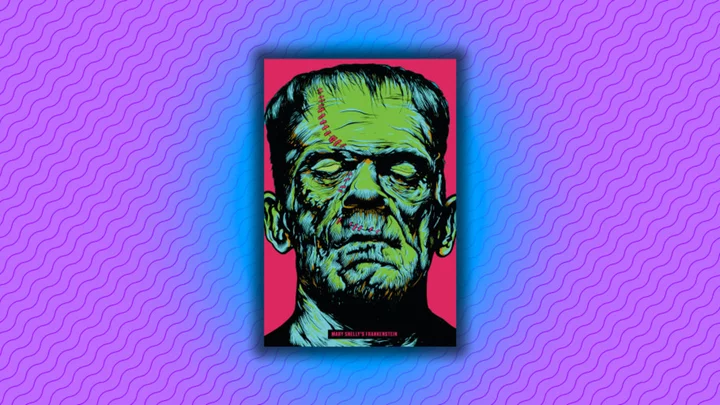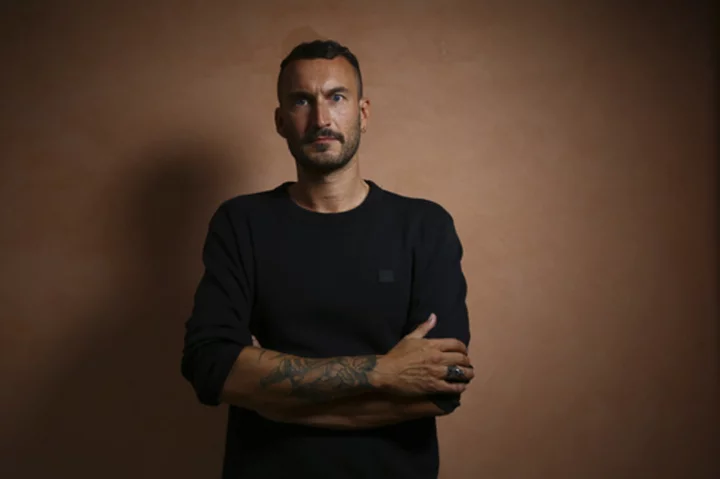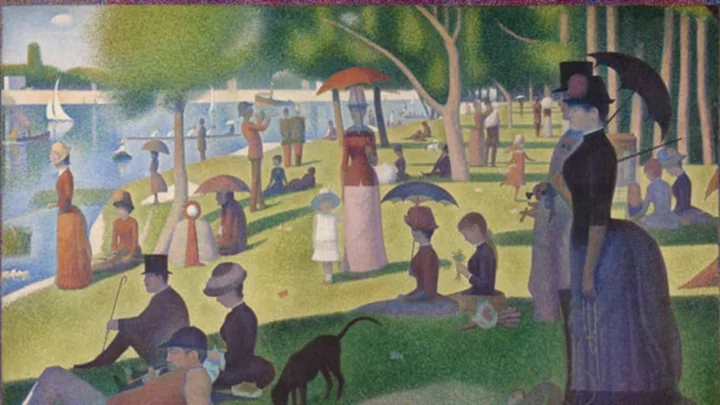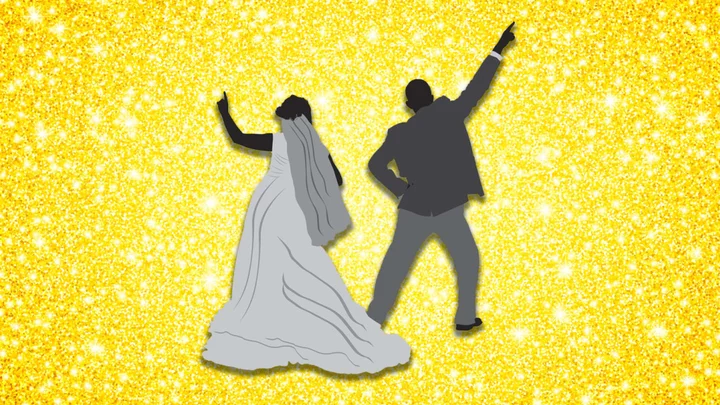Frankenstein, the story of a mad scientist who brings the dead back to life only to discover that he has created a monster, continues to be one of our most enduring horror stories even though it’s more than 200 years old. Here are the nuts and bolts about the tale, first published in 1818, that forever touched on our fears about what can go wrong when people play God.
1. Frankenstein was written by a teenager.
Mary Wollstonecraft Godwin’s teenage years were eventful, to say the least. The future Mary Shelley ran away at age 16 with the poet Percy Bysshe Shelley, and over the next two years, she gave birth to two children. In 1816, the couple, accompanied by Godwin’s stepsister Claire Clairmont, traveled to Switzerland and visited Lord Byron at Villa Diodati. While there, 18-year-old Mary started Frankenstein. It was published in 1818, when she was 20 years old.
2. The novel came out of a ghost story competition.
Godwin and Shelley visited Switzerland during the “year without a summer,” when the April 1815 eruption of Mount Tambora in modern Indonesia caused severe climate abnormalities and a lot of rain. Stuck inside, the group read ghost stories from the book Fantasmagoriana. It was then that Lord Byron proposed that they have a competition to see who could come up with the best ghost story: Byron, Mary, Percy, or Byron’s physician, John Polidori.
In the end, neither Byron nor Percy finished a ghost story, although Polidori later wrote The Vampyre—which influences vampire stories to this day—based on Byron’s offering. (Byron’s piece was later published as “A Fragment.”)
3. Mary Shelley said she got the idea from a dream.
At first, Mary had writer’s block, and was unable to come up with a good idea for a ghost story. Then she had a waking dream—“I did not sleep, nor could I be said to think,” she said. In the introduction to the 1831 edition of Frankenstein [PDF], she described the vision as follows:
“I saw the pale student of unhallowed arts kneeling beside the thing he had put together. I saw the hideous phantasm of a man stretched out, and then, on the working of some powerful engine, show signs of life. … He sleeps; but he is awakened; he opens his eyes; behold, the horrid thing stands at his bedside, opening his curtains, and looking on him with yellow, watery, but speculative eyes.”
Mary opened her eyes and realized she’d found her story. “What terrified me will terrify others,” she thought. She began working on it the next day.
4. She was also inspired by science.
Plenty of real-life science inspired Shelley, including exploration of the North Pole and the then-mysterious causes of its magnetism and the work of chemist Sir Humphry Davy (whose lectures Shelley had attended with her father whens he was young). Another inspiration was the recently discovered phenomenon of galvanism, when muscles contract due to stimulation by electricity. “Perhaps a corpse would be re-animated; galvanism had given token of such things,” Shelley mused later. “Perhaps the component parts of a creature might be manufactured, brought together, and endued with vital warmth.” Shelley and company discussed galvanism while stuck inside in Switzerland, and those conversations contributed to Frankenstein.
5. Shelley wrote Frankenstein in the shadow of tragedy.
Before she started Frankenstein, Shelley gave birth to a daughter, who died just days later. (In fact, only one of the Shelleys’ four children lived to adulthood.) Soon after the baby died, she wrote in her journal, “Dream that my little baby came to life again—that it had only been cold & that we rubbed it by the fire & it lived—I awake & find no baby—I think about the little thing all day.” This circumstance, as well as the suicide of her half-sister Fanny, must have contributed to the novel.
6. Frankenstein was the name of the scientist, not the monster.
In the novel, Victor Frankenstein is the scientist. The monster remains unnamed and is referred to as “monster,” “creature,” “dæmon,” and “it.” But if you’ve made the mistake of calling the monster “Frankenstein,” you’re not alone. As early as 1890, The Scots Observer complained that Frankenstein “presented the common pressman with one of his most beloved blunders”—confusing the two.
7. The novel shares its name with a castle.
Mary made up the name Frankenstein. However, Frankenstein is a German name that means “Stone of the Franks.” What’s more, historian Radu Florescu claimed that the Shelleys visited Castle Frankenstein on a journey up the Rhine River. While there, they learned about an alchemist named Konrad Dippel who had lived in the castle. He was trying to create an elixir, called Dippel’s Oil, which would make people live for over a hundred years. Like Victor Frankenstein, Dippel was rumored to have dug up graves and experimented on the bodies. Not all historians are convinced there’s a link, however, pointing out that there’s no indication Frankenstein had a castle in the novel, and that Shelley never mentioned visiting the castle herself in any of her writing about her trip up the Rhine.
8. Many thought Percy Shelley wrote Frankenstein.
Frankenstein was first published anonymously. It was dedicated to William Godwin, Mary’s father, and Percy Shelley wrote the preface. Because of these connections, many assumed that Percy Shelley was the author. This myth continued even after Frankenstein was reprinted in Mary’s name. In fact, some people are still arguing that Percy authored the book—but while he edited Frankenstein and encouraged Mary to expand the story into a novel, actual authorship is a stretch.
9. Frankenstein was originally slammed by critics.
When Frankenstein came out in 1818, many critics bashed it. “What a tissue of horrible and disgusting absurdity this work presents,” John Croker, of the Quarterly Review, wrote. But Gothic novels were all the rage, and Frankenstein soon gained readers. In 1823, a play titled Presumption; or The Fate of Frankenstein cemented the story’s popularity. In 1831, a new version of the book was published, this time under Mary’s name.
10. Frankenstein is widely considered the first science fiction novel.
With Frankenstein, Shelley was writing the first major science fiction novel, as well as inventing the concept of the “mad scientist” and helping establish what would become horror fiction. The influence of the book in popular culture is so huge that the term Frankenstein has entered common speech to mean something unnatural and horrendous.
Mary went on to write other science fiction, such as her short story Roger Dodsworth: The Reanimated Englishman, about a man who has been frozen in ice, and her novel The Last Man, about a survivor in a world destroyed by plague, from the same year.
11. Thomas Edison adapted Frankenstein for film.
In 1910, Thomas Edison’s studio made a one-reel, 15-minute film of Frankenstein, one of the first horror movies ever made. It was thought lost until it was rediscovered in the 1980s. Today, it has made its way to YouTube; you can watch it above.
A version of this story ran in 2015; it has been updated for 2023.
This article was originally published on www.mentalfloss.com as 11 Surprising Facts About Mary Shelley’s ‘Frankenstein’.









